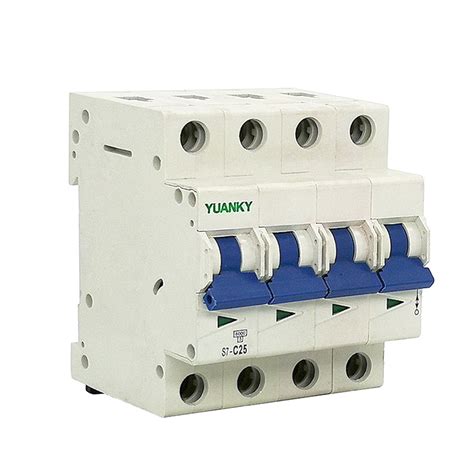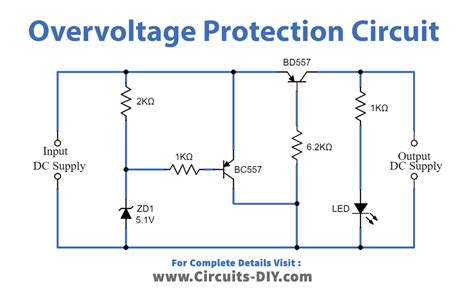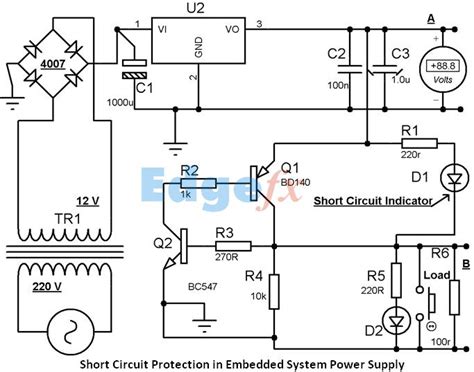Understanding Circuit Protection and Its Importance
Circuit protection is a crucial aspect of electrical and electronic systems, ensuring the safety of devices, equipment, and individuals from various electrical faults. In this comprehensive article, we will explore the different methods of circuit protection, their working principles, and their applications in various sectors.
What is Circuit Protection?
Circuit protection refers to the techniques and devices used to safeguard electrical and electronic systems from damage caused by overcurrent, overvoltage, short circuits, and other electrical faults. The primary goal of circuit protection is to prevent harm to equipment, minimize downtime, and ensure the safety of personnel working with or around electrical systems.
Why is Circuit Protection Important?
There are several reasons why circuit protection is essential:
-
Safety: Circuit protection devices prevent electrical fires, shocks, and explosions, ensuring the safety of individuals and property.
-
Equipment Protection: By isolating faults and limiting current, circuit protection devices minimize damage to expensive electrical and electronic equipment.
-
Compliance: Proper circuit protection ensures compliance with various safety standards and regulations, such as the National Electrical Code (NEC) and the Occupational Safety and Health Administration (OSHA) guidelines.
-
Reliability: Circuit protection helps maintain the reliability and longevity of electrical systems by preventing premature failure due to electrical faults.
Types of Circuit Protection Devices
There are several types of circuit protection devices, each with its unique characteristics and applications. Here are the most common ones:
1. Fuses
Fuses are the oldest and most widely used circuit protection devices. They consist of a thin metal wire or strip that melts when the current flowing through it exceeds a predetermined value, thus interrupting the circuit and protecting the connected equipment.
How Fuses Work
Fuses work on the principle of thermal overload. When the current flowing through the fuse exceeds its rated value, the heat generated by the resistance of the fuse element causes it to melt, breaking the circuit and stopping the current flow.
Types of Fuses
There are several types of fuses, including:
-
Cartridge Fuses: These fuses are enclosed in a cylindrical housing and are commonly used in industrial and commercial applications.
-
Blade Fuses: Also known as automotive fuses, these fuses have a flat, blade-like design and are commonly used in vehicles and low-voltage applications.
-
Slow-Blow Fuses: These fuses are designed to withstand short-duration current surges, making them suitable for applications with inductive loads, such as motors and transformers.
-
Fast-Acting Fuses: These fuses quickly interrupt the circuit during overload conditions, making them ideal for protecting sensitive electronic devices.
Fuse Ratings
Fuses are rated based on their voltage and current-carrying capacity. It is essential to select the appropriate fuse rating for a given application to ensure proper protection.
| Fuse Type | Voltage Rating | Current Rating | Applications |
|---|---|---|---|
| Cartridge | 250V, 600V | 1A – 600A | Industrial, commercial |
| Blade | 32V | 1A – 100A | Automotive, low-voltage |
| Slow-Blow | 250V, 600V | 1A – 100A | Motors, transformers |
| Fast-Acting | 250V, 600V | 0.1A – 100A | Electronic devices |
2. Circuit Breakers
Circuit breakers are electromechanical devices that protect circuits from overcurrent and short-circuit conditions. Unlike fuses, circuit breakers can be reset after they trip, making them a more convenient option for many applications.
How Circuit Breakers Work
Circuit breakers consist of two main components: a bimetallic strip and an electromagnetic coil. When the current flowing through the breaker exceeds its rated value, the bimetallic strip heats up and bends, causing the contacts to open and interrupt the circuit. In the case of a short circuit, the electromagnetic coil creates a magnetic field strong enough to instantly trip the breaker.
Types of Circuit Breakers
There are several types of circuit breakers, including:
-
Miniature Circuit Breakers (MCBs): These compact breakers are commonly used in residential and light commercial applications for protecting individual circuits.
-
Molded Case Circuit Breakers (MCCBs): These breakers are larger and more robust than MCBs and are used in industrial and commercial applications for protecting entire distribution boards or switchgear.
-
Air Circuit Breakers (ACBs): These high-capacity breakers are used in power distribution systems for protecting large loads and generators.
-
Ground Fault Circuit Interrupters (GFCIs): These breakers are designed to protect against ground faults, which occur when current leaks from the circuit to the ground, posing a shock hazard.
Circuit Breaker Ratings
Like fuses, circuit breakers are rated based on their voltage and current-carrying capacity. They also have a breaking capacity, which indicates the maximum fault current the breaker can interrupt without damage.
| Circuit Breaker Type | Voltage Rating | Current Rating | Breaking Capacity | Applications |
|---|---|---|---|---|
| MCB | 120V, 240V | 1A – 125A | 10kA | Residential, light commercial |
| MCCB | 240V, 480V | 15A – 3000A | 25kA – 100kA | Industrial, commercial |
| ACB | Up to 15kV | Up to 6000A | 50kA – 150kA | Power distribution |
| GFCI | 120V, 240V | 15A, 20A | 5mA – 30mA | Personnel protection |
3. Surge Protection Devices (SPDs)
Surge protection devices, also known as transient voltage surge suppressors (TVSS), are designed to protect electrical and electronic equipment from voltage spikes and surges caused by lightning strikes, switching transients, and other sources.
How Surge Protection Devices Work
SPDs work by diverting excess voltage to the ground, thus limiting the voltage that reaches the protected equipment. They typically consist of metal oxide varistors (MOVs), gas discharge tubes (GDTs), or silicon avalanche diodes (SADs) that act as high-speed switches, conducting when the voltage exceeds a certain threshold.
Types of Surge Protection Devices
SPDs can be classified based on their installation location and the level of protection they provide:
-
Type 1 SPDs: These devices are installed at the service entrance and provide protection against direct lightning strikes.
-
Type 2 SPDs: These devices are installed downstream of the service entrance and provide protection against surges generated within the facility.
-
Type 3 SPDs: These devices, also known as point-of-use SPDs, are installed close to the protected equipment and provide localized protection against residual surges.
Surge Protection Device Ratings
SPDs are rated based on their voltage protection level (VPL), maximum continuous operating voltage (MCOV), and nominal discharge current (In).
| SPD Type | VPL | MCOV | In | Applications |
|---|---|---|---|---|
| Type 1 | 600V – 6000V | 150V – 1000V | 10kA – 20kA | Service entrance |
| Type 2 | 600V – 1500V | 150V – 600V | 5kA – 10kA | Distribution panels |
| Type 3 | 330V – 600V | 75V – 300V | 1kA – 3kA | Point-of-use protection |
4. Residual Current Devices (RCDs)
Residual current devices, also known as ground fault circuit interrupters (GFCIs) or earth leakage circuit breakers (ELCBs), are designed to protect personnel from electric shock by detecting ground faults and interrupting the circuit.
How Residual Current Devices Work
RCDs work by continuously monitoring the current flowing through the live and neutral conductors of a circuit. Under normal conditions, the current in both conductors should be equal. If a ground fault occurs, some of the current will flow through the ground conductor, creating an imbalance. The RCD detects this imbalance and trips the circuit within milliseconds, preventing harm to individuals.
Types of Residual Current Devices
There are two main types of RCDs:
-
Fixed RCDs: These devices are permanently installed in the distribution board and protect entire circuits or groups of circuits.
-
Portable RCDs: These devices are plugged into a socket outlet and provide protection for individual appliances or equipment.
Residual Current Device Ratings
RCDs are rated based on their sensitivity (trip current) and their operating time. The most common ratings are:
| RCD Type | Trip Current | Operating Time | Applications |
|---|---|---|---|
| General Purpose | 30mA | 300ms | Residential, commercial |
| S-Type (Selective) | 100mA, 300mA | 500ms | Industrial, medical |
| Fixed | 10mA – 500mA | 40ms – 300ms | Distribution boards |
| Portable | 10mA – 30mA | 40ms | Individual appliances |

Coordination of Circuit Protection Devices
Proper coordination of circuit protection devices is essential to ensure selective isolation of faults and minimize the impact on the rest of the electrical system. Coordination involves setting the trip characteristics of upstream and downstream devices so that the device closest to the fault trips first, while the upstream devices remain closed.
Discrimination
Discrimination, also known as selectivity, is the ability of a circuit protection system to isolate a fault while maintaining power to the rest of the system. There are two main types of discrimination:
-
Current Discrimination: This method involves setting the trip currents of upstream devices higher than those of downstream devices, ensuring that the downstream device trips first during a fault.
-
Time Discrimination: This method involves setting the trip times of upstream devices longer than those of downstream devices, allowing the downstream device to clear the fault before the upstream device trips.
Cascading
Cascading is a technique used to achieve coordination in large, complex electrical systems. It involves dividing the system into smaller sections, each protected by its own set of circuit protection devices. The devices in each section are coordinated with each other and with the devices in the adjacent sections to ensure selective isolation of faults.

Best Practices for Implementing Circuit Protection
To ensure the effectiveness and reliability of circuit protection systems, follow these best practices:
-
Conduct a thorough risk assessment: Identify potential fault scenarios and their consequences to determine the appropriate level of protection required.
-
Select the right devices: Choose circuit protection devices based on their ratings, trip characteristics, and compatibility with the electrical system.
-
Coordinate devices properly: Ensure that upstream and downstream devices are coordinated to achieve selective isolation of faults.
-
Follow manufacturer’s guidelines: Adhere to the installation, testing, and maintenance guidelines provided by the device manufacturers.
-
Regularly test and maintain devices: Perform periodic testing and maintenance of circuit protection devices to ensure their proper operation and reliability.

Frequently Asked Questions (FAQ)
-
What is the difference between a fuse and a circuit breaker?
A fuse is a one-time device that melts when the current exceeds its rated value, while a circuit breaker can be reset after it trips. Fuses are generally smaller and less expensive, while circuit breakers offer more flexibility and convenience. -
Can I replace a fuse with a higher-rated one?
No, replacing a fuse with a higher-rated one can lead to inadequate protection and increase the risk of damage to the electrical system and connected equipment. Always use fuses with the correct ratings specified by the manufacturer. -
How often should I test my RCDs?
It is recommended to test RCDs at least every six months by pressing the test button on the device. This ensures that the RCD is functioning properly and will trip in the event of a ground fault. -
What is the purpose of surge protection devices?
Surge protection devices (SPDs) are designed to protect electrical and electronic equipment from voltage spikes and surges caused by lightning strikes, switching transients, and other sources. They divert excess voltage to the ground, limiting the voltage that reaches the protected equipment. -
Can I install circuit protection devices myself?
While some basic circuit protection devices, such as fuses and portable RCDs, can be installed by users, it is generally recommended to have a qualified electrician install and coordinate circuit protection devices in a facility’s electrical system to ensure proper protection and compliance with safety regulations.
Conclusion
Circuit protection is a vital aspect of electrical and electronic systems, ensuring the safety of personnel, equipment, and facilities. By understanding the various methods of circuit protection, their working principles, and their applications, designers and users can select the appropriate devices and implement effective protection strategies.
Remember to follow best practices, such as conducting risk assessments, selecting the right devices, coordinating devices properly, adhering to manufacturer’s guidelines, and regularly testing and maintaining circuit protection devices. By doing so, you can minimize the risk of electrical faults and their consequences, ensuring the reliability and longevity of your electrical systems.

Leave a Reply